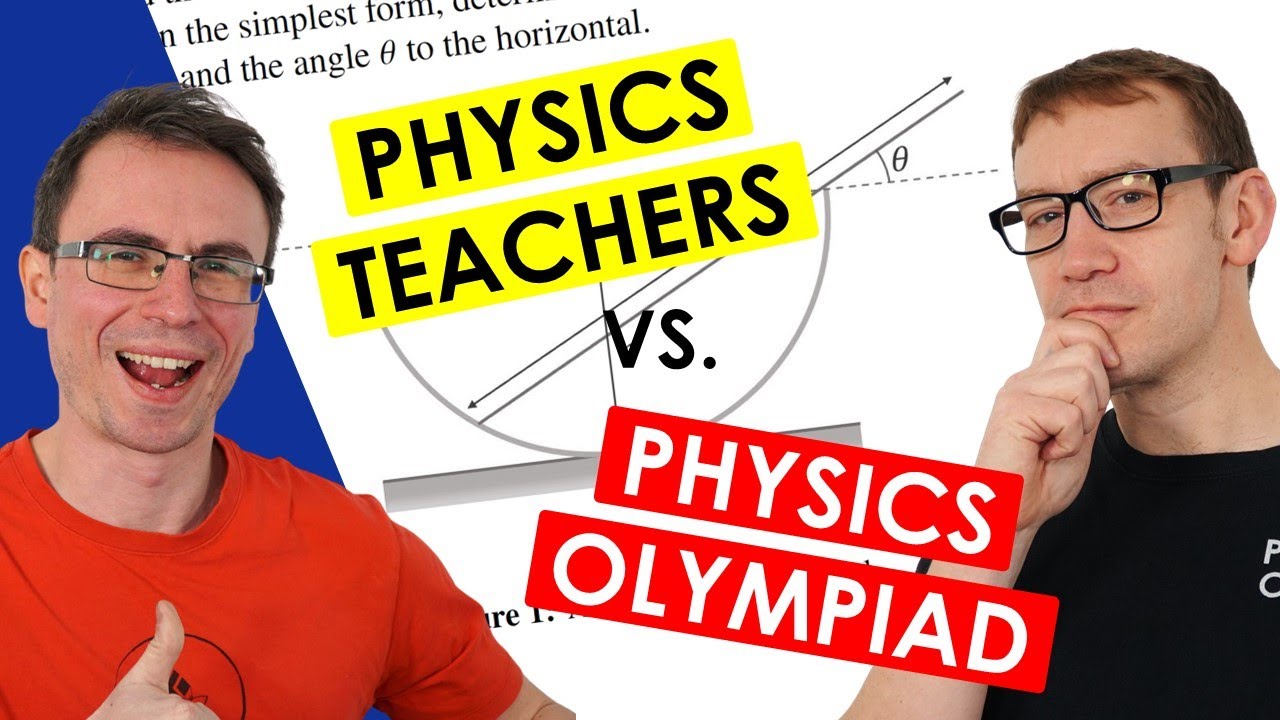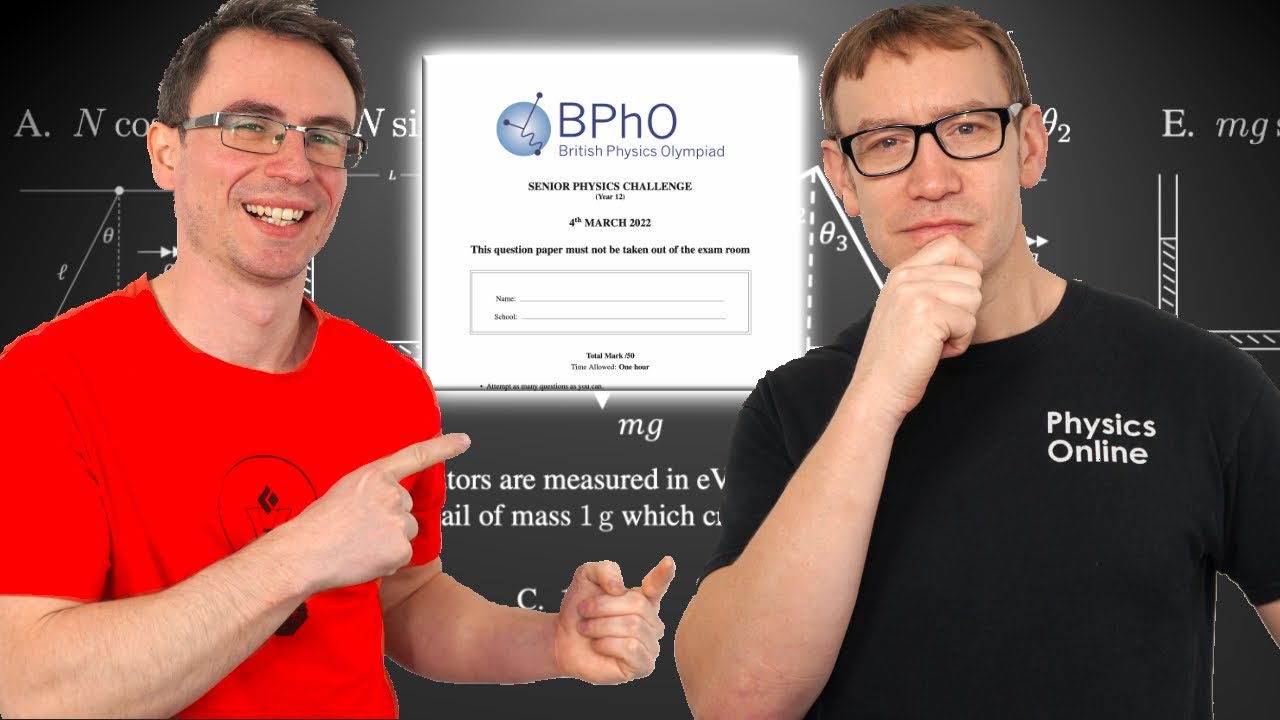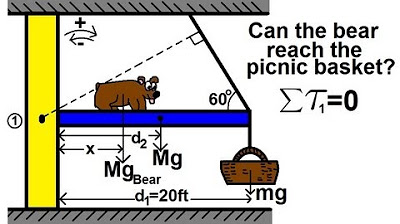My Solutions to the British Physics Olympiad: Round 1 2019, Section 1, g and h
TLDRIn this video, the host from Zed Physics solves problems from the 2019 British Physics Olympiad, focusing on questions from Part F onwards. They explore concepts like Archimedes' principle and density to determine how much platinum can be attached to potassium before sinking in mercury. The video also covers thermal dynamics, calculating the temperature of water when half of the ice melts in an insulated bucket. The host emphasizes energy conservation and algebraic manipulation to reach solutions, inviting viewers to attempt the problems themselves before watching further tutorials.
Takeaways
- 📚 The video is a continuation of solving problems from the 2019 British Physics Olympiad, focusing on questions from part F onwards.
- 🚫 The video is not affiliated with the British Physics Olympiad and presents the presenter's own solutions, acknowledging that multiple solutions may exist.
- 🔬 Question F involves a density problem where platinum and potassium are combined to determine the volume ratio at which the combination starts to sink in mercury.
- 📐 The problem is approached using Archimedes' principle, which states that the upward buoyant force is equal to the weight of the displaced fluid.
- ⚖️ The density of mercury, platinum, and potassium are given, and the goal is to find the volume of platinum that can be added to a fixed volume of potassium before sinking.
- 🧩 The solution involves algebraic manipulation of the equation representing the balance of forces (buoyant force and weight) acting on the combined materials.
- 🔢 The final calculation for the volume of platinum results in approximately 16 cubic centimeters, which is rounded to two significant figures.
- 🧊 In part G, the problem involves calculating the temperature of water when half of a kilogram of ice at 0°C has melted in a thermally insulated bucket.
- 🌡 The solution to part G uses energy conservation, considering the specific heat capacities and latent heat of fusion for ice, as well as the initial and final temperatures of the water and ice.
- 🔄 The process involves the melting of ice and the simultaneous heating of the ice-water mixture and cooling of the surrounding water, all contributing to the final temperature calculation.
- ✅ The final temperature calculation results in approximately 4.247 degrees Celsius, rounded to 4.3 degrees, indicating the temperature when half of the ice has melted.
Q & A
What is the topic of the video?
-The video is about solving questions from the 2019 British Physics Olympiad, focusing on part F and onwards.
Is the video affiliated with the British Physics Olympiad?
-No, the video is not affiliated with the British Physics Olympiad. It presents the creator's own solutions to the problems.
What is the principle used to solve the first problem in the video?
-The Archimedes principle is used to solve the first problem, which states that the upthrust is equal to the weight of the liquid displaced.
What is the density of mercury mentioned in the video?
-The density of mercury given in the video is 13.6 grams per cubic centimeter.
How is the volume of platinum related to the volume of potassium in the first problem?
-The volume of platinum is related to the volume of potassium through the equation that equates the total weight of the displaced mercury to the combined weight of the platinum and potassium.
What is the final calculated volume of platinum that can be added to potassium before it starts sinking in mercury?
-The final calculated volume of platinum that can be added is approximately 16 cubic centimeters.
What is the second problem in the video about?
-The second problem is about calculating the temperature of water when half of a kilogram of ice at 0 degrees Celsius has melted in a thermally insulated bucket filled with water.
What is the volume of the bucket in liters and how is it converted to cubic meters?
-The volume of the bucket is 5 liters, which is converted to cubic meters by multiplying by 1000 and then by 10^-6, resulting in 5 × 10^-3 cubic meters.
How is the energy conservation principle applied in the second problem?
-The energy conservation principle is applied by setting the energy required to melt the ice and raise the temperature of the ice-water mixture equal to the energy lost by cooling the water in the bucket.
What is the calculated final temperature of the water when half of the ice has melted?
-The calculated final temperature of the water is approximately 4.3 degrees Celsius.
What is the specific heat capacity of water used in the second problem?
-The specific heat capacity of water used in the second problem is 4180 J/(kg·K).
Outlines
🔬 Solving the 2019 British Physics Olympiad Problem F
This paragraph introduces a physics problem from the 2019 British Physics Olympiad, focusing on a scenario involving platinum and potassium submerged in mercury. The problem explores the concept of density and Archimedes' principle to determine how much platinum can be added to a given volume of potassium before the combination begins to sink. The solution process involves setting up an equation based on the densities of the substances and the density of mercury, then solving for the volume of platinum that can be added before the critical density is reached. The final answer is calculated to be approximately 16 cubic centimeters of platinum.
🧊 Melting Ice in Water: The 2019 British Physics Olympiad Part G
The second paragraph delves into a thermodynamics problem from the same Olympiad, where one kilogram of ice at 0 degrees Celsius is placed in an insulated bucket and water is added until the bucket is full. The task is to calculate the temperature of the water when half of the ice has melted. The solution involves energy conservation, considering the specific heat capacities of ice and water, the latent heat of fusion for ice, and the initial and final temperatures of the system. The problem is solved by setting up an equation that equates the energy released by the melting ice to the energy absorbed by the water and the remaining ice, leading to a final temperature calculation of approximately 4.3 degrees Celsius.
🔢 Mathematical Simplification and Calculation in Physics Problems
This paragraph continues the discussion from the previous one, focusing on the mathematical simplification and calculation process required to solve the thermodynamics problem. It details the algebraic manipulation of the equation that relates the energy changes in the water and the ice. The paragraph explains the process of isolating the variable representing the final temperature and solving for it, which involves factorizing and rearranging terms to find the temperature at which half of the ice has melted and the water has reached equilibrium.
📚 Conclusion and Invitation to Further Exploration
The final paragraph wraps up the video script by summarizing the solutions provided for the physics problems and inviting viewers to attempt the remaining questions on their own. It acknowledges the complexity of the problems and encourages viewers to engage with the material before watching further solutions in separate videos. The creator expresses gratitude for watching and looks forward to continuing the discussion in future videos.
Mindmap
Keywords
💡Archimedes' Principle
💡Density
💡Buoyancy
💡Specific Heat Capacity
💡Latent Heat of Fusion
💡Thermal Equilibrium
💡Energy Conservation
💡Relative Density
💡Displacement
💡Volume Calculation
Highlights
Introduction to solving the 2019 British Physics Olympiad Round 1, focusing on Part F onwards.
The problem involves calculating the volume of platinum that can be attached to potassium before the combination sinks in mercury.
Explanation of Archimedes' principle as the core concept for solving the problem.
Derivation of the equation for the total weight of displaced mercury being equal to the total weight of platinum and potassium.
Simplification of the equation by canceling out common factors, leading to a final expression to solve for the volume of platinum.
Final calculation yields that 16 cubic centimeters of platinum can be added before the combination sinks.
Transition to Part G, involving the melting of 1 kg of ice in a thermally insulated bucket filled with water.
Calculation of the volume of water after considering the volume occupied by ice in the 5-liter bucket.
Introduction of energy conservation principles to solve for the final temperature of the water when half of the ice has melted.
Detailed breakdown of energy transfers: cooling the initial water, melting the ice, and heating the resulting ice water.
Simplification of the equation to isolate the unknown final temperature.
Final calculation results in the temperature of the water being approximately 4.3 degrees Celsius when half of the ice has melted.
Encouragement for viewers to attempt the problems themselves and to reach out with any questions.
Acknowledgment that multiple solutions may exist for the physics problems discussed.
Conclusion with a preview of upcoming videos covering further questions from the 2019 British Physics Olympiad.
Transcripts
Browse More Related Video

My Solutions to the British Physics Olympiad, BPhO Senior Challenge 2019 Multiple Choice

A Level Physics Teachers Take On Olympiad Questions

My Solutions: British Physics Olympiad Round 1 2020 - Section 1 a to c

Physics Youtubers VS Physics Olympiad

Physics 15 Torque Example 6 (6 of 7) The Hungry Bear on a Beam; Tension in the Cable

Tips and overview of Round 1 of the British Physics Olympiad
5.0 / 5 (0 votes)
Thanks for rating: